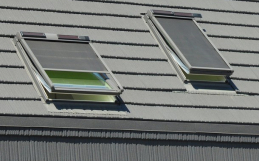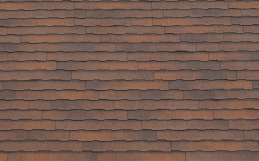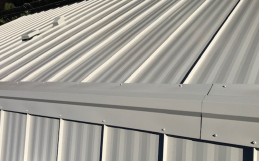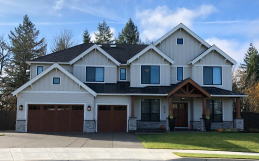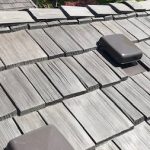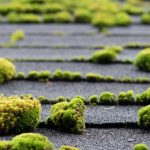Moss growth is as dangerous to your roof as it is unsightly. When moss starts growing on your roof, it can both eventually weaken asphalt or composite roof shingles and absorb water and hold it in place. If there are any imperfections in the roofing material, that water can find its way underneath, to the underlayment, and then onto the decking.
This leads to leaks which can lead to problems with the structure of your roof, ceilings, and even the walls of your home. The problem with this damage is it doesn’t happen overnight. By the time you realize there’s an issue, it’s probably too late to fix the problem before repairs are needed.
To prevent moss damage, it’s a good idea to remove the moss as soon as it appears. In some cases, the best time of year to remove moss from the roof is in the summer. Moss turns dormant during the drier weather and becomes more brittle. This makes it easier to remove manually, with a broom or a very light pressure wash.
There is a school of thought that you should wait until the moss “growing season,” which is when the rains start falling in the Fall and continues through the Spring. The reason for this is that the moss is absorbing as much water as it can. If moss treatments are applied to the roof, they will be absorbed along with the rain.
Options for Removing Moss from Your Roof
Removing moss from your roof is a relatively simple process, just so long as you haven’t let it get out of control. When using a broom (if your roof isn’t too sloped), start at the top and remove the moss by sweeping down the roof. Sweeping up could lift or otherwise damage shingles.
Don’t be too aggressive because you could be brushing off the protective granules found in some roofing materials. The same with pressure washing–too much pressure will do just as much damage to your roof as the moss itself. Once the bigger clumps are removed, give your roof a wash with a combination of equal parts water and chlorine bleach to kill the remaining moss.
If you decide to use chemicals to kill the moss, some products come in containers that can be added to the end of a garden hose and sprayed from the ground level (if you have enough water pressure). Other products may need to be mixed and applied while on the roof. Either way, once the moss is dead, you’ll still need to remove it from the roof.
Safety During Roof Moss Removal
Depending on how you want to remove the moss, either with chemical agents or with a broom or pressure washer, the time of year may not matter. If you’re doing the work by yourself, there’s more to think about than just roof moss removal. If your roof has a steep slope, do you really want to head up there when it’s raining cats and dogs?
Above all, safety should be an overriding factor. It can be hard enough walking around on your roof in the best conditions. Once you throw in the wet weather and strong winds of the Pacific Northwest, the prospect of moss removal with a broom becomes all the less appealing.
Prevent Moss From Growing
The best way to keep moss from growing in the first place is to take preventive steps. After removing all of the moss with a good roof cleaning, you can add copper or zinc strips to prevent moss from growing back. When rain hits these products, particles are released that kill moss before it gets a chance to gain a foothold.
Another great thing about the PNW? All of the big, lush, leafy trees we have! But if those trees are providing shade, or dropping leaves and twigs on your roof, that debris can hold water in place and give the moss a great environment for growth. Keep overhanging limbs away from your roof and that will help keep your roof nice and clean.

